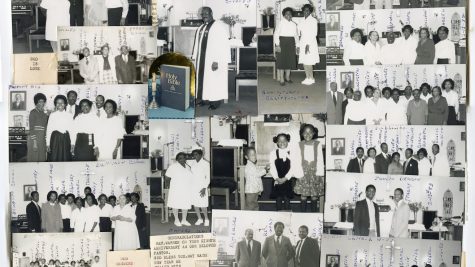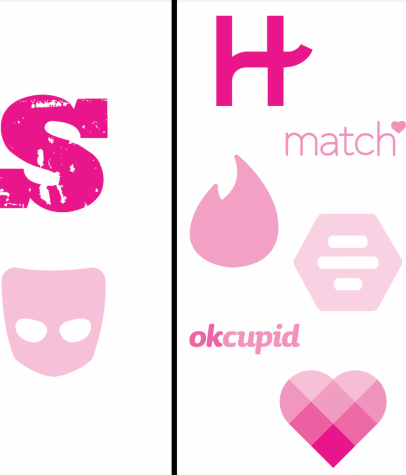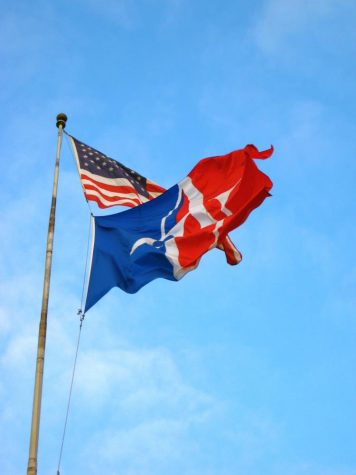Why it's on all of us
18 percent of women on AU’s campus have reported having an
unwanted sexual experience.
In a survey conducted last fall, 71 percent of men feel safe
on AU’s campus and 51 percent of women feel safe from sexual assault.
The national averages show that one of five women and one of
16 men have been sexually assaulted between the ages of 18 and 24.
To address the pervasive problem of sexual assault that is
seen on our campus, AU is taking part in the White House’s It’s on Us campaign.
On Monday, Nov. 10, Student Government President Sophia Wirth and
representatives of the White House’s Its on Us campaign stood before an theater
of AU community members to discuss recommendations for the administration to
target sexual assault. The theater was so full that late attendees stood along
the walls for the entire duration of the report.
Wirth is part of the Sexual Assault Awareness and Prevention
task force that was formed in May 2014 to research and recommend to
administration measures to prevent sexual assault and violence on campus.
Wirth reminded the audience that the task force’s recommendations
are only the first steps in confronting a complicated problem. The
recommendations have not yet been enforced as they will need to be approved and
acted upon by the administration.
“We must all adopt personal ownership and agency when it
comes to tackling this issue, because while policy changes may help target some
of the issues that lead to the perpetuation of sexual assault, the reality is
that changing the underlying culture is on us,” said Wirth.
This is sense of personal initiative and culture change is
what makes the Its On Us campaign such an inspiring strategy. It operates under
the assumption that if every student on campus believes that the perpetuation
of sexual assault is completely unacceptable, the risk of sexual assault at AU
will be greatly diminished.
The event’s encouraging turnout suggests that a sexual
assault free campus is not an unreasonable goal for the following three to five
years, but how do we bridge the gap between a large group of enthusiastic
activists and a campus-wide cultural shift?
The task force listed six recommendations:
1. AU should create a Sexual Assault Response and Prevention
Program that would operate out of the Wellness Center and make services for
survivors of sexual assault more accessible.
2. The offices of the Sexual Assault Prevention Coordinator
and the Coordinator of Victim Advocacy Services should be moved to MGC’s third
floor once East Campus is constructed and the space is unoccupied.
3. Preventative sexual assault education should become
mandatory for all students at AU. This education would continue past the first year
of college and include in-person teaching instead of the use of a less
effective online course with only an implied mandate. The implied mandate is
similar to AU’s AlcoholEdu program, which students are not required take but
are strongly encouraged.
4. Freshman should receive a two-hour training during
welcome week that would cover consent-based education, bystander intervention,
and information on resources for survivors. Bystander intervention programs are
shown to be very effective.
5. For survivors and their friends, a flowchart should be
created to outline available resources and explain which are confidential and which
are not.
6. Title IX language and a list of resources for survivors should
be incorporated into all syllabi because these documents are often the ones
most frequently seen by students.
All of these measures would create a campus culture in which
sexual assault is intolerable and survivors are treated with respect. According
to Kyle Lierman, Associate Director of Public Engagement at the White House and
leader of the Its On Us Campaign, such an environment at AU could inspire
change in the rest of the country.
“Culture is never changed in our society without colleges
and universities leading the way and that’s exactly what each and everyone of
you is doing here,” said Lierman.
This change is not going to come quickly, however. Lierman
estimates that the White House Its On Us campaign will run for up to 10 years
and even at AU progress might not occur as rapidly as we hope.
When members of the audience asked how quickly
administration will react to these recommendations, Wirth’s answers implied
that student activism is key while administration makes its decisions on the
policies.
“I think that the task force worked incredibly hard to make
sure that these recommendations are all things that the administration can say
yes to,” Wirth said. “There’s a pretty significant chance that a lot of these
if not all of the recommendations will be implemented, but it’s not going to
happen overnight. It is going to take student action; it is going to take
student pressure.”
Want to join the movement? The first step is easy: read the
task force’s on SG’s website, http://ausg.org/au-us-report-recommendations/. Understanding
the suggested policies will make your arguments for sexual assault prevention
reform more convincing. Hopefully, before we know it, the task force’s
recommendations and a campus where no one is at risk of sexual assault will
become AU’s reality.











